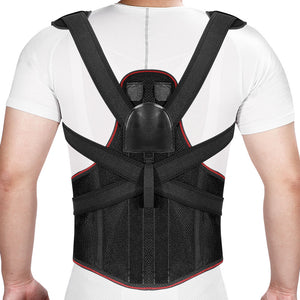How to Wrap a Shoulder?

This article will provide a comprehensive guide on how to wrap a shoulder, highlighting the differences from traditional methods. Before diving into the techniques, we'll explore the anatomy of the shoulder and the types of injuries that can occur, offering a deeper understanding of why correct wrapping is essential.

The Anatomy and Function of the Shoulder
To find out how to wrap a shoulder, one must first appreciate the intricate structure of the shoulder.The shoulder joint is composed of three prominent bones: the humerus (upper arm bone), the scapula (shoulder blade), and the clavicle (collarbone). These bones intersect to create two pivotal joints that facilitate the shoulder's extensive range of motion. The rotator cuff is integral to shoulder function. It consists of four muscles and tendons, stabilizing the joint and facilitating arm lifting and rotation. Even minor issues with these components can result in injury, underscoring the significance of how to wrap a shoulder perfectly.
Common Causes and Types of Shoulder Injuries
Not all shoulder injuries are the same, and every injury has different underlying causes. That is why it is essential to understand the types of injuries and their causes, as it will permit you to devise a proper strategy to avoid these injuries.
Causes of Shoulder Injuries
- First of all, overusing your shoulder makes it injury-prone. Just like any other body part, repetitive overuse of the shoulder will increase strain in your muscles, which will eventually impact your shoulder health. You will see a lot of athletes facing overuse injuries alongside people whose job requires heavy lifting and other such intense activities.
- Trauma-associated injuries usually happen when your shoulder has a direct impact, like falling on an outstretched arm can lead to fractures or dislocations.
- Degenerative injuries are also common, and their symptoms appear frequently in older people.
Common Types of Shoulder Injuries
- Rotator Cuff Tears
- Shoulder Dislocations
- Bursitis
- Tendonitis
- Frozen Shoulder
Every injury type brings consistent discomfort in the shoulder and hinders your ability to move your arms freely.
How to Wrap a Shoulder with Traditional Bandage Measure
Before learning how to wrap a shoulder perfectly, let’s take a look at what the traditional bandage wrapping method is. Wrapping the shoulder with a classic bandage is relatively simple, but it requires great attention to detail. Here are the basic steps:
1. Preparation
The first thing you need to do is to get a long elastic bandage, some gauze padding, and adhesive tape to fix the bandage in place.
2. Cleaning
Ensure the shoulder is clean and dry. If you have sensitive skin, you may apply a thin layer of padding.
3. Re-position the Arm
- Either sit or stand straight, and bend the arm to form a 90-degree angle. This position would facilitate easy and perfect wrapping.
- Commence at the upper arm just below the shoulder; Wrap the bandage around the arm, then across the chest and back to the arm.
After you are done bandaging all around the shoulder, secure the end of the bandage with adhesive tape. Make sure it's tight enough, but it will not cut off circulation.
5. Limitations and Potential Problems
While the traditional bandage wrapping technique has been long used, it is known to restrict your arm's movement. Also, it is hard to apply at home and should mostly be done by a practitioner. Unequal pressure at different parts of the shoulder can result in the stoppage of blood circulation and skin irritation, which will only increase your discomfort.
Benefits of Shoulder Braces Over Regular Bandage
Before jumping into how to wrap a shoulder brace, it is necessary to consider if these braces are even worth using. Following are the benefits of shoulder braces that make them different from traditional wrappings.

-
Customization and Adaptability
Secondly, shoulder braces have different sizes, which makes it a highly personalized option compared to the wrappings that try to impose one-fits all solutions.
-
Easy to Wear and Adjust
-
Better Support and Compression Effect
-
Hot or Cold Compression Treatment Options
-
Breathability and Durability
How to Wrap a Shoulder with a Brace
Now let's see how to wrap a shoulder brace in a way that you will no longer be bothered about any shoulder injury.✓ Choose the Right Shoulder Brace
The first step in the whole process is to get your hands on the correct type of shoulder brace. Consider different factors like the type of your injury, a size that fits you perfectly, and your budget. Also, dive deeply into the features of the shoulder brace you want to select and get the one that really suits you.
✓ Steps on How to Wrap a Shoulder with Brace
Now, here is a step-by-step guide to how to wrap a shoulder with a brace:- Apply the Brace: Place the brace over the shoulder. Ensure that the brace supports the whole injured region. The large area of the brace will lie directly above the shoulder joint.
- Support Straps Adjustment: Apply the strap nearest to your body first and then move to the outside strap. Gradually tighten the straps as adjustments provide equal compression and support. The brace should be tight but comfortable enough to deny any extreme squeezing of the shoulder.
- Check Comfort: Gently adjust the arm to ensure there are no pressure points and that it is not pinching. Readjust the straps for a more comfortable fit.
- Secure the Brace: Check if all straps are well-tightened and secured. Make sure that the brace will not move in your usual activities or any other ways.
- Ensure Optimal Support and Comfort: As you continue your day, periodically check if the brace needs any adjustment. Follow the manufacturer's guidelines for cleaning the brace to keep it hygienic and prolong its life. Regular cleaning prevents skin irritation and maintains the brace's effectiveness.
Fivali Recommendation
1. Fivali Shoulder Cuff Brace Promote Recovery Ice Pack Insertion – 1 Pack
Fivali Shoulder Cuff Brace Promote Recovery Ice Pack Insertion – 1 Pack is made up of premium quality breathable neoprene and has durable stitches that will last for a long. It comes with high-quality adjustable straps that are easily manageable to get the desired level of compression. You can place your own ice or heat packs in the built-in design that is intended to give you a therapeutic effect. This shoulder brace for pain is well-known among people of various ages suffering from shoulder injuries of every type.

2. Fivali Shoulder Support Brace for Dislocation Prevention and Recovery
As its name suggests, the Fivali Shoulder Support Brace for Dislocation Prevention and Recovery is mainly designed to prevent and recover from a shoulder dislocation. It helps in regulating different shoulder muscles and comes in different sizes for a customized experience. Pressure distribution in the shoulders is also made easy with this brace due to its adjustable straps. Its natural ability to adjust itself according to the curvature of your shoulder makes it a perfect product for everyday use.-
Posted in
Joint, Recovery, Shoulder pain













